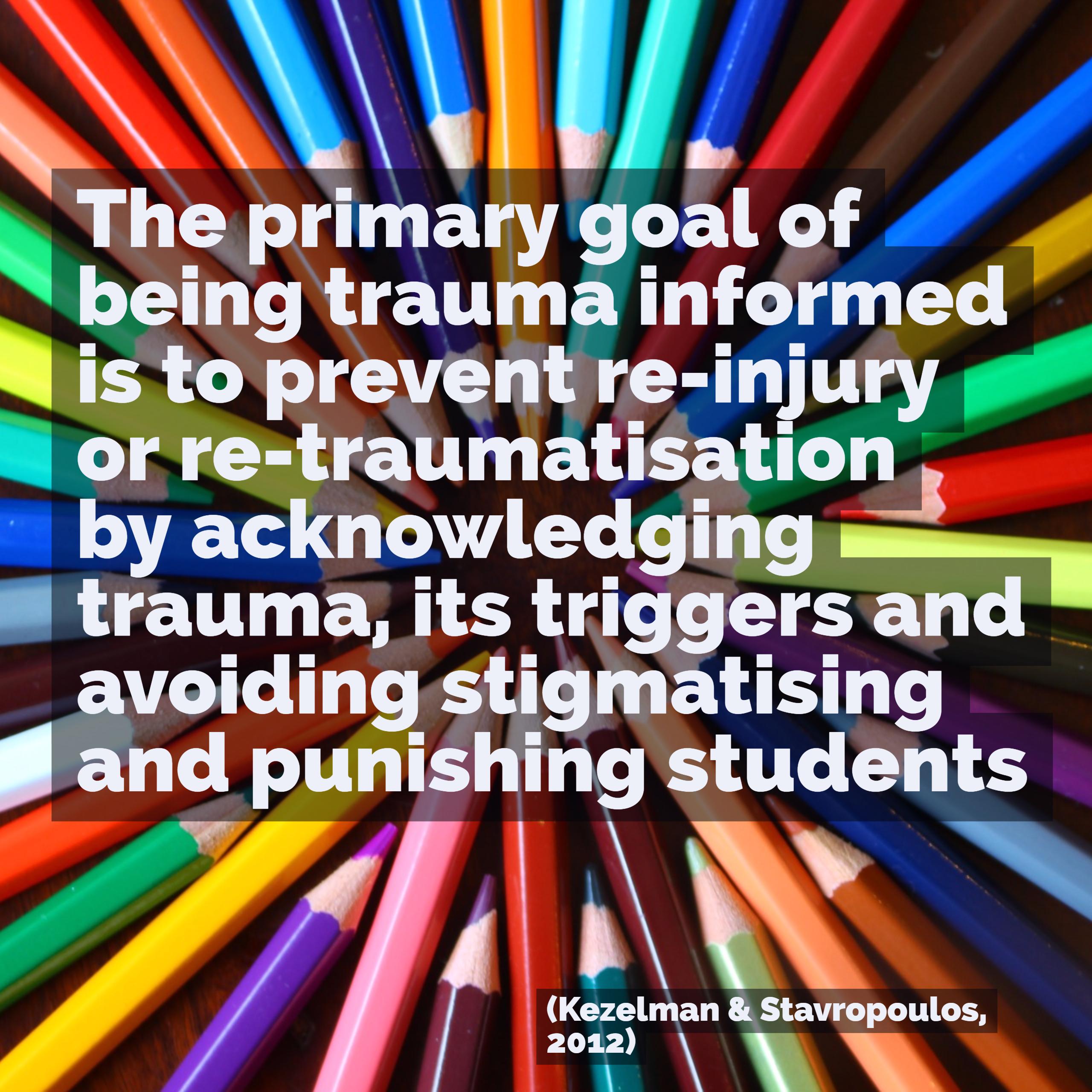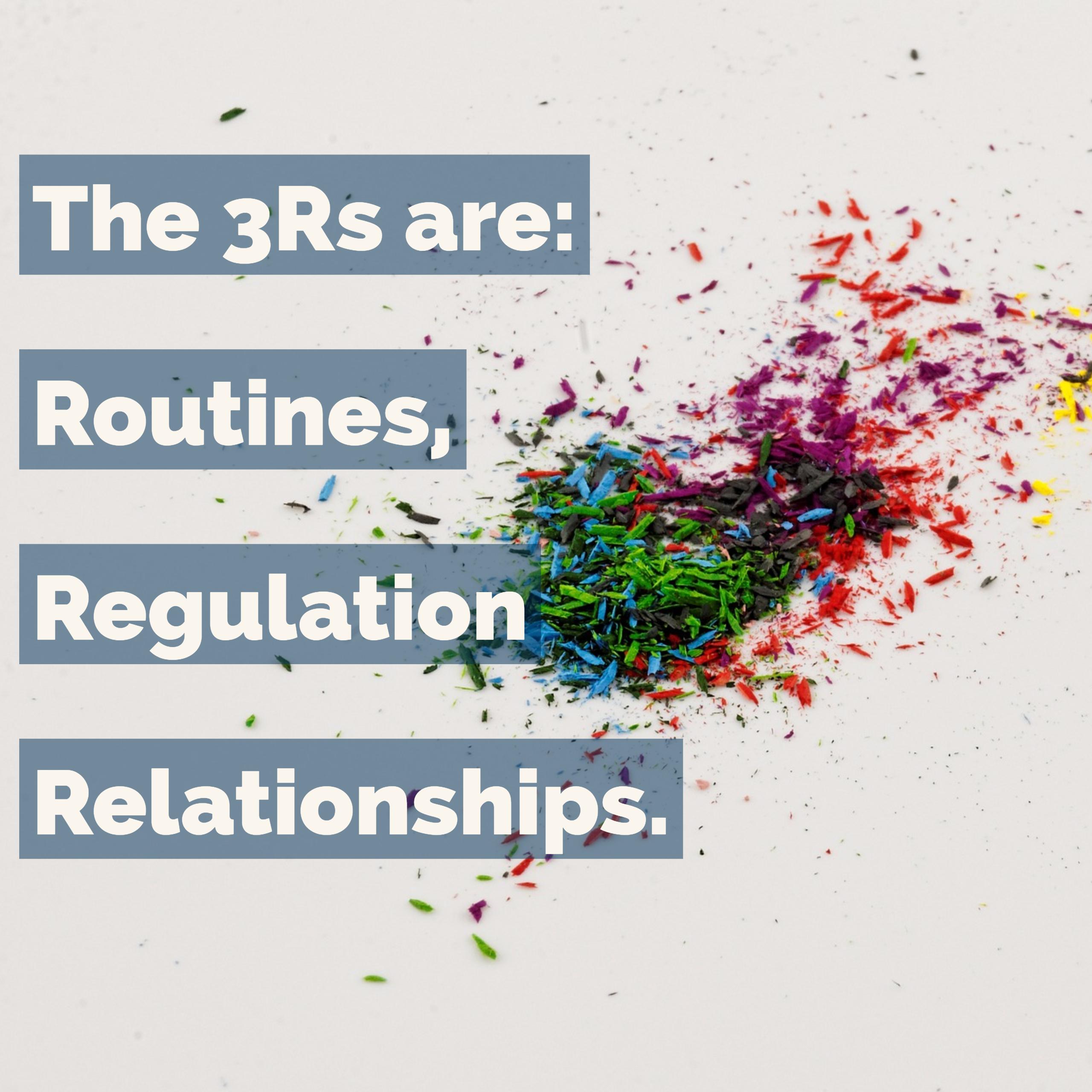
Schools as Service Providers

This article was authored by Deborah Costa, a registered psychologist and school
counsellor with a professional area of interest and development in
working to support traumatised children and young people in schools.
Upon returning to my work in schools after the long summer break I have taken in the sights, sounds and scents filling classrooms and corridors; sights of bright, tanned, smiling faces and colourful, new school back packs; sounds of laughing and clatter from busy children, smells of new school books and leather shoes; a kaleidoscopic brightness of pencils, pens and stationary items. I have witnessed educators creating colourful, welcoming learning spaces and planning for year-long engaging and stimulating academic learning. I have observed traditional classroom spaces filled with modern furniture, technology and tubs of resources for students. And…I have seen some unique student retreats and calming spaces…visualise tepees with teddies, comfy corners with cushions, mosquito nets draped over mats… spaces already set-up for dysregulated children to access. My thoughts are focussed on the children who propelled the creation of these spaces in our school. What has returning to school been like for them? What has their autonomic nervous systems shifted towards in the corridors and classrooms? What have the smells, sights and sounds been like for them? Will they find one of these unique spaces within their new classroom, and, if they do, will it mean for them a marker of emotional safety, and, if they don’t, what will it suggest for them? Whilst the newness, the freshness, at the commencement of the school year can bring a heady sense of hopefulness, and of positive expectation, for many children, for traumatised children the newness can represent threat, the unfamiliar can instil fear, the differences can represent danger to bodies hyper-vigilant. Rather than considering new opportunities, new hopes, new goals they confront sounds of new teacher voices, changed and unknown routines, lack of predictability, altered physical environments. All unavoidable and yet potential threats to nervous systems wired for survival. I contemplate, can physical spaces – the accessible student retreats and calming spaces, help create trauma sensitive environments in schools and convey a sense of safety while the relational spaces are being created. For children impacted by interpersonal trauma, feeling safe and trusting they are safe is crucial. When we work as professionals in the area of trauma, we understand this and we work to nurture this. My office within the school is promoted as a safe, welcoming, calming space. There are choices for where to sit, cuddly teddies, a lounge, story books, a sand-tray, fiddle toys, art materials, glitter calming bottles, a sink and a fridge. It is a place for students to come to check-in, chat, learn to relax, spend time with a supportive person, and make sense of their world. It is both a safe physical space and a safe relational space. But access and time are limited. I have a chance to see children for a one hour session every fortnight developing a safe and supportive relationship with them, assisting them to develop ways to self-regulate, helping them to understand their life, talking with them or not talking, but creating. And, I am reminded by Bruce Perry (2006) of the limits in my role as a therapist… How can we possibly expect 45 minutes a week with a therapist to heal a child after 10 years of chaos, threat, humiliation, degradation and terror?”(Perry, B 2006, pg.46)  My work as a trauma informed School Counsellor, Psychologist and educator within the school setting includes delivering trauma informed services within the context of a traditional education system and a school setting that is beginning to become trauma sensitive. Like the schools I work in, many schools are gradually learning of the importance of trauma sensitive environments for their students and some are beginning a process of changing from traditional to trauma informed and trauma sensitive. This requires a paradigm shift shaping culture, practices and policies to be sensitive to the experiences and needs of traumatised individuals; acknowledging the importance of trauma in understanding and responding to presentations of children, and refocusing on what happened to the child, rather than focusing on their conduct alone (McInerney & McKlindon, 2014).
My work as a trauma informed School Counsellor, Psychologist and educator within the school setting includes delivering trauma informed services within the context of a traditional education system and a school setting that is beginning to become trauma sensitive. Like the schools I work in, many schools are gradually learning of the importance of trauma sensitive environments for their students and some are beginning a process of changing from traditional to trauma informed and trauma sensitive. This requires a paradigm shift shaping culture, practices and policies to be sensitive to the experiences and needs of traumatised individuals; acknowledging the importance of trauma in understanding and responding to presentations of children, and refocusing on what happened to the child, rather than focusing on their conduct alone (McInerney & McKlindon, 2014).
For schools considering shifting from traditional to trauma informed the process must be daunting. Read SAMHSAs definition of trauma informed systems: “A program, organisation or system that is trauma-informed:
1. Realizes the widespread impact of trauma and understands potential paths for recovery;
2. Recognizes the signs and symptoms of trauma in clients, families, staff and others involved with the system;
3. Responds by fully integrating knowledge about trauma into policies, procedures and practices; and
4. Seeks to actively resist re-traumatization” (SAMHSAS, 2014, pg.9). For a school’s personnel this involves a fundamental shift in the way they think about, try to understand and then respond to the children and young people – their actions, their emotions, their thoughts, and their bodies. What school personnel think matters because it influences how they feel and behave towards the students. Their meaning is conveyed to the student through their actions, postures, body language and tone of voice. Becoming trauma informed necessitates that these adults working with children and young people refocus to consider the student’s world through the student’s eyes, and shift from a focus on what the student has done wrong to a focus on what has been done wrong to the student. Traumatised children are noticed for their problem behaviours, punished and frequently excluded for these behaviours. In the school environment students displaying problem behaviours related to past trauma become re-traumatised through punishment for these behaviours embedding the trauma further and continuing the cycle of behavioural problems rather than lessening them (Kezelman & Stavropoulos, 2012). The primary goal of being trauma informed is to prevent re-injury or re-traumatisation by acknowledging trauma and its triggers and avoiding stigmatising and punishing students (Kezelman & Stavropoulos, 2012). This can be tricky in a child-raising culture shaped more by social learning theory and behaviour management principles and less by attachment theory, trauma theory and brain development. Traumatised children and young people’s difficulties are especially problematic in schools as these are the places they spend most of their time outside of home and where they have to rely on other adults, engage with other students, focus and pay attention, sit still and regulate their levels of physiological arousal. These tasks are challenging for children and young people with highly reactive stress response systems and brains wired for specialising in threat detection; physiology antagonistic to exploring, learning and creating. These children and young people are often without capability and without opportunity to express what is happening, or has happened, for them. How do we conceptualise what is going on for these children? In traditional systems and settings their behaviours aren’t recognised as highly adaptive survival strategies for meeting their needs and increasing their safety, or as the skill set they have developed from years of observing others around them; as the outcome of altered neurological systems, but interpreted as deliberate attempts to muck up, cause mischief, avoid work, be lazy and therefore in need of punishment. When we attempt to evaluate the behaviour without ever trying to understand the behaviour we give up opportunities to know the child, connect with the child and be that one person that mattered for the child. What these students require is positive, supportive relationships with adults in which their good qualities and special uniqueness is communicated to them (Golding & Hughes, 2012). Recovery from trauma and neglect is about relationships – rebuilding trust, regaining confidence, returning to a sense of security (Perry & Szalavitz 2006). These children, instead, frequently find themselves in paediatricians’ offices, referred by schools to determine their problems and their diagnoses. Schools are “…choosing to label these children with pejorative diagnostic labels rather than to understanding their developmental difficulties as very predictable consequences of their chaotic, relationally distorted and impoverished early lives” (Perry, B. 2006, pg.47). Van der Kolk (2014) says
“children who act out their pain are often diagnosed with “oppositional defiant behaviour”, “attachment disorder” or “conduct disorder” but these labels ignore the fact that the rage and withdrawal are only facets of a whole range of desperate attempts at survival” (pg.282). Behaviour management can become the focus when attending to these students in schools. Too often, however, behaviour management does not facilitate the development of these necessary relationships (Bomber & Hughes, 2013). Furthermore, Van der Kolk (2014) tells us that attempting to control a student’s behaviour whilst failing to address the underlying issue of abuse results in ineffective and potentially harmful treatments. Schools can provide much more for traumatised children and young people than a recommendation to see a paediatrician or an external Psychologist. Schools can act as service providers; educators as supporters through their daily interactions with traumatised students. “We need interventions that go beyond providing individual therapy to those offering support within the worlds they are living in” (Golding and Hughes, 2012, pg.212). The 3Rs for supporting trauma repair in schools provides a simple set of goals to achieve this. The 3Rs are: Routines, Regulation and Relationships.
however, behaviour management does not facilitate the development of these necessary relationships (Bomber & Hughes, 2013). Furthermore, Van der Kolk (2014) tells us that attempting to control a student’s behaviour whilst failing to address the underlying issue of abuse results in ineffective and potentially harmful treatments. Schools can provide much more for traumatised children and young people than a recommendation to see a paediatrician or an external Psychologist. Schools can act as service providers; educators as supporters through their daily interactions with traumatised students. “We need interventions that go beyond providing individual therapy to those offering support within the worlds they are living in” (Golding and Hughes, 2012, pg.212). The 3Rs for supporting trauma repair in schools provides a simple set of goals to achieve this. The 3Rs are: Routines, Regulation and Relationships.
Routines
The daily rhythm of school life through its regular routines, repetitive tasks, classroom and school rituals can offer patterned consistency, predictability and a sense of rhythm. Szalavitz and Perry (2006) note “patterned, rhythmic qualities can soothe internal anxiety”. Routines for learning, gathering together, play and relaxation, rituals for celebrations and special events, all form an integral part of classroom life and can provide therapeutic consistency and predictability.
Regulation
Supporting the development of students’ capacity for self-regulation of attention, emotions and behaviours as well as providing co-regulation with supporting, caring adults when children are overwhelmed and dysregulated offers children and young people opportunities to gradually develop mastery over previously overwhelming experiences. The Paediatric Development Centre (2016) states “’Adults have the freedom to seek out whatever helps them self-regulate, but children do not always this freedom therefore adults need to provide them opportunities as well as activities to help them maintain an optimal arousal state”. Supporting self-regulation and providing co-regulation takes place within relationships.
Relationships
At a neurobiological level relationships can provide attachment and connection, support co-regulation and self-regulation and social engagement. Golding and Hughes (2012) remind us that all children need relationships to thrive and that traumatised children need relationships to heal. Bruce Perry (2006) talks of creating a web of support for traumatised children and young people in a way that uses healthy and invested people in the child or young person’s life, including teachers, to provide therapeutic opportunities in quality relational interactions. “One therapy session a week will not provide sufficient healthy relational interactions to permit the child to catch up from years of relational poverty”(Perry, B 2006, pg.46). Schools are filled with people who signed up for a career in working with children and young people and to making a difference in their lives. And schools are the settings where children and young people spend most of their time outside of their home – time in which they could be experiencing connections that make a positive difference in their lives.
Providing everyday opportunities for students to experience predictability, affect mastery and positive, caring connections utilising the 3Rs for supporting trauma repair in schools can contribute to a schools’ developing trauma sensitive environments, and engender an atmosphere of emotional, relational and physical safety for their students to develop and thrive within.
List of References:
Bomber, L.M. & Hughes, D.A. (2013) Settling to Learn – Settling Troubled Pupils to Learn: Why Relationships Matter in School, Worth Publishing Ltd, London.
Golding, K.S. & Hughes, D.A. (2012) Creating Loving Attachments – Parenting with PACE to Nurture Confidence and Security in the Troubled Child, Jessica Kingsley Publishers, London and Philadelphia. Kezelman, C. & Stavropoulos, P. (2012) “The Last Frontier” Practice Guidelines for Treatment of Complex Trauma and Trauma Informed Care and Service Delivery. Blue Knot Foundation.
http://www.blueknot.org.au/Portals/2/Practice%20Guidelines/Blue%20Knot%20Foundation%20Guidelines_WEB_Final.pdf McInerney, M & McKlindon, A (2014) Unlocking the Door to Learning: Trauma Informed Classrooms & Transformational Schools, Education Law Centre
http://www.elc-pa.org/wp-content/uploads/2015/06/Trauma-Informed-in-Schools-Classrooms-FINAL-December2014-2.pdf Van Der Kolk, B (2014) The Body Keeps the Score – Mind, Brain and Body in the Transformation of Trauma, Penguin Group, London. Paediatric Development Centre (2016) Arousal and Self-Regulation.
http://pediatricdevelopmentcenter.com/specializations/arousal-and-self-regulation/ Perry, B. (2006) Applying Principles of Neurodevelopment to Clinical Work with Maltreated and Traumatised Children – The Neurosequential Model of Therapeutics.
https://childtrauma.org/wp-content/uploads/2013/08/Perry-Bruce-neurosequentialmodel_06.pdf Szalavitz, M. & Perry, B. (2006) Born for Love – Why Empathy is Essential – and Endangered. Harper Collins e-books. “The most significant consequence of early relational trauma is the loss of the ability to regulate the intensity and duration of affects” (Schore, 2003) Affect Regulation and the Repair of the Self
